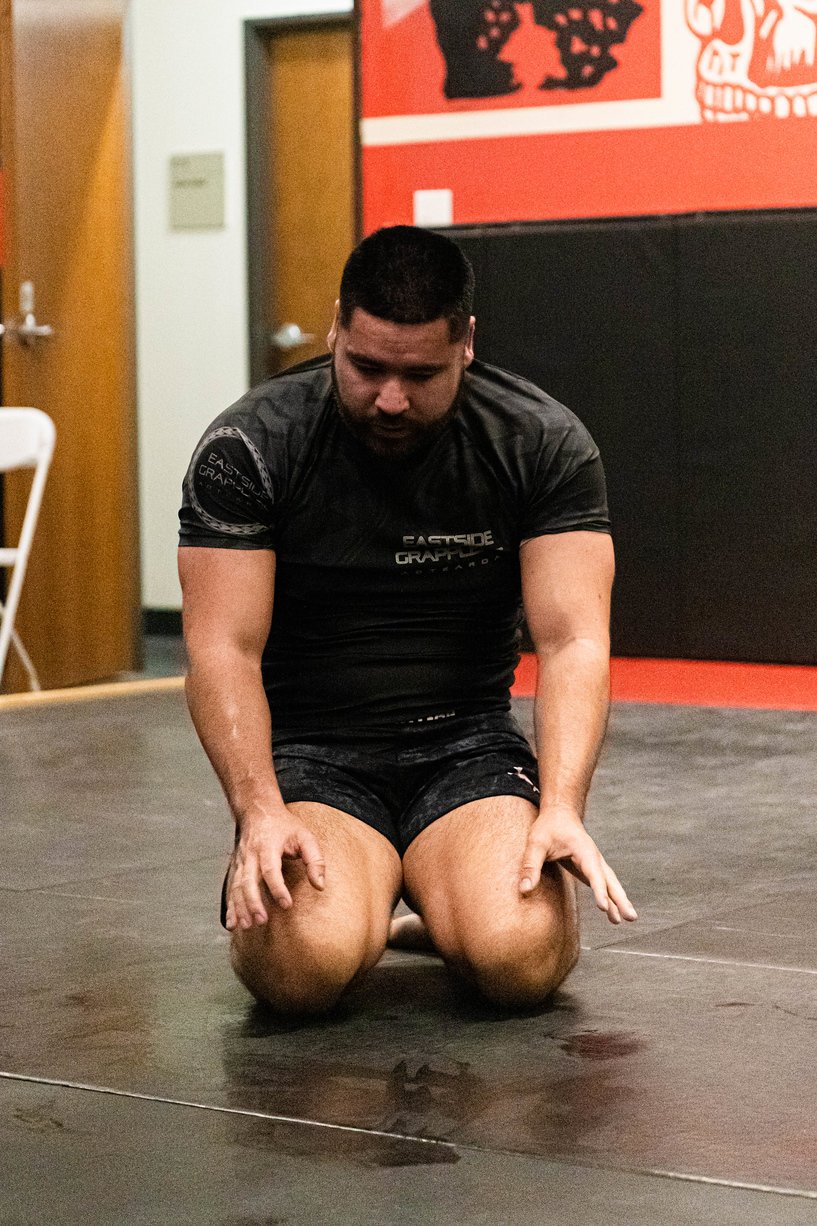Most articles will give you every reason under the sun to sprint for boxing. I mean, Rocky sprints in almost every Rocky movie as part of his training montage!
But there are drawbacks to sprinting. And in my opinion, more drawbacks than positives when using sprints for boxing training.
Before diving into these reasons, I define sprinting as trying to reach top speed within a short period. Performing one-minute sprint intervals are not technically considered sprints as they are sub-maximal.

High Risk Of Injury
Do you know the number one injury in team sports such as rugby, soccer, and Australian Rules Football? Hamstring injuries.
Do you know when these hamstring injuries occur? When sprinting.

FREE Strength & Conditioning Program To Never Gas Out In The Ring
The hamstrings, specifically the biceps femoris, which is the hamstring on the most outer part of the back of your thigh, is highly susceptible to stretch as it’s the longest. The hamstrings are also biarticular, meaning they cross two joints, the hip, and the knee.
Being biarticular means the hamstrings are incredibly susceptible to being stretched past their tolerance level. Try bending your knees slightly, then rounding your back to touch the floor. Pretty easy, right?
Now straighten your knees, arch your back and do the same thing. You probably only get halfway. This is because you’ve lengthened the hamstrings at both joints creating a hamstring stretch before even bending over.
The hamstrings undergo a similar stretch when sprinting. But not under slow, controlled conditions like you just did. It happens as quickly as 8-9 meters per second (29-32 km/h or 18-20 mph) with ground contacts as quick as 0.12 seconds.
This rapid stretch requires the ability to control it using the strength of the hamstrings when sprinting, which is where pulled hamstrings occur as the strength and stretch required exceeds the capacity of the muscle.
As a boxer, you likely don’t spend much time training your hamstrings, let alone working on your sprint technique (nor should you). For this reason, sprinting promotes a high risk of injury for adaptations you can target in much safer, more effective ways for the sport of boxing.

Doesn’t Match The Biodynamic Structure Of The Sport
Boxing is a sport of footwork, upper body movement, and punches. Sprinting is the activity of accelerating to maximum speed in a straight line. When I talk about the biodynamics of a sport, I’m simply referring to the movements that make up a sport.
Yes, not everything you do in training should replicate or be similar to boxing. However, more often than not, training should be as close to the sport as possible, especially regarding energy system development.
Sprinting is often used to develop alactic power or capacity. That is the ability to produce a lot of speed and power within a short time frame.
Limited Transfer To Boxing

If you replaced all of your alactic power-based striking sessions with sprinting or replaced all sprint-based sessions with alactic power-based striking sessions, which method do you think would transfer best to your boxing performance?
Typically the latter, as you are training the sport directly, spending more time perfecting a punch while developing the physical qualities you need.
Again, not every facet of training needs to involve boxing. For example, developing knockout power in the legs can be trained using jump squats or various medicine ball throws.
But if you are performing an exercise to transfer to boxing, they should match most of the criteria of dynamic correspondence. These criteria are:
- The muscle groups involved in the exercise – must be the same as the competition exercise.
- The amplitude/direction of the movement – range of motion and direction of movement should be the same as the competition exercise.
- The accentuated region of force production – shares similar regions with the competition exercise where the greatest forces are produced within the range of motion.
- The magnitude of force-effort and time of its application – the amount of force and the time to produce it is similar to the competition exercise.
- The regime of muscular contraction – the exercise replicates the same muscular contraction as the competition exercise.
Sprinting meets none of these criteria, making it a very general exercise that isn’t likely to transfer to the sport of boxing.
What Should You Do Instead?
If boxing strength and power in the legs are your ultimate goal, various jumps, throws, and lower-body strength exercises are your best option. I take you through an entire 12-week train like a professional boxer strength program that focuses on developing strength and power in the lower body.
If your ultimate goal is fine-tuning your alactic energy system for boxing conditioning, you should be developing power in the gym with exercises that are more likely to transfer to a powerful punch or boxing drills themselves on the bag or pads.
However, if you have a hectic boxing schedule or are looking for something you can do after a strength session, then Andrew Usher has developed brutal sprint protocols you can use on a spin bike.
He’s developed world champion boxers such as Hannah Rankin with these protocols as it simultaneously builds leg strength. Here’s a sample of spin bike sprints for endurance:
10 x 10-second sprints with the resistance dial turned 2.5 times with 20 seconds recovery.
The goal is to bring your recovery period to 10 seconds eventually. Doing this and tracking your heart rate recovery is an easy way to track how you’re progressing. These are absolutely brutal and are a far better alternative than sprinting. You can download Andrew’s sprint protocols within the SSOF Underground!
Biggest, Baddest Gas Tank In Just 8 Weeks
The Dominate The Ring Conditioning System is specifically designed to develop elite level boxing cardio based on your easy to implement test results.


Summary
I’m not entirely dogmatic about sprinting. If you enjoy it, have a strong background in sprinting, and are far enough away from a fight, some sprinting as training variation can be useful.
However, it shouldn’t be made a staple training modality for boxing and should be avoided for those in heavier weight classes.


